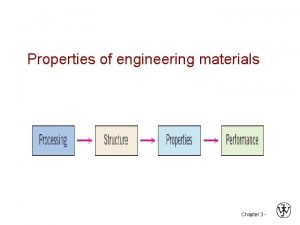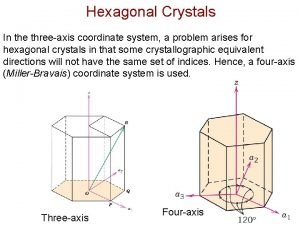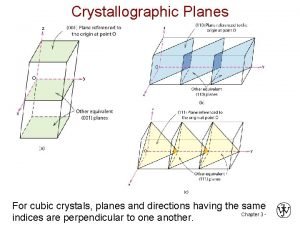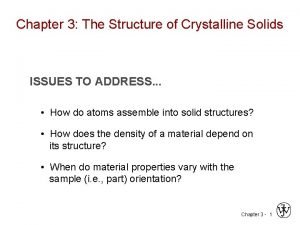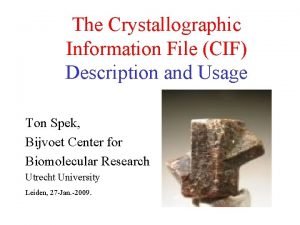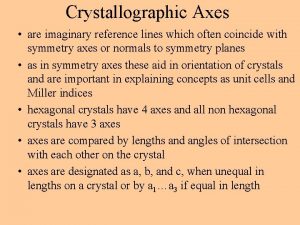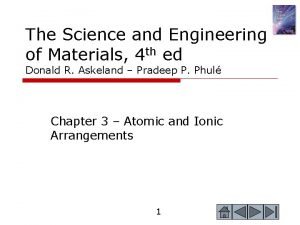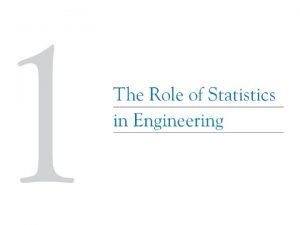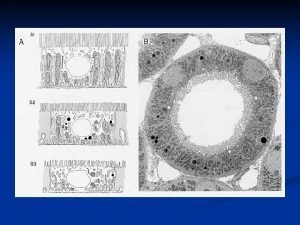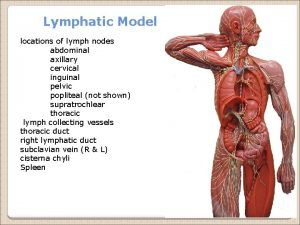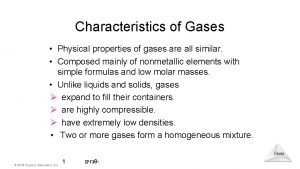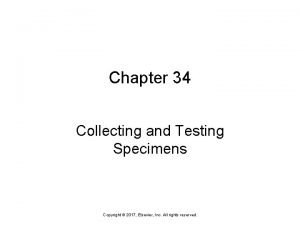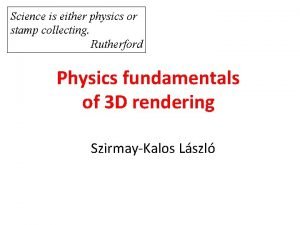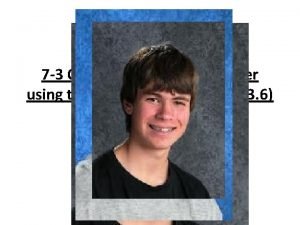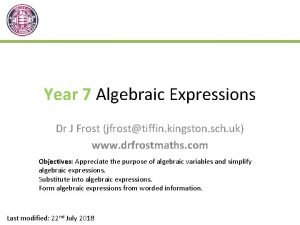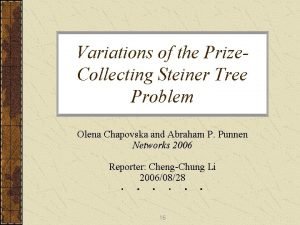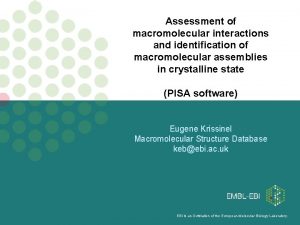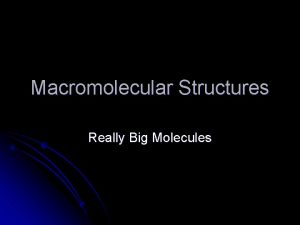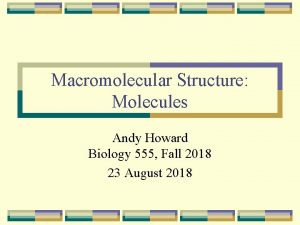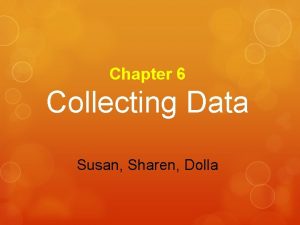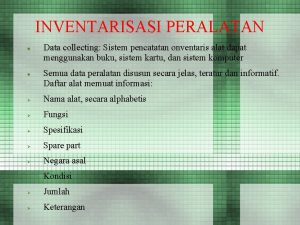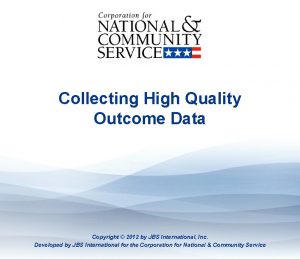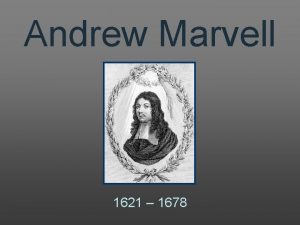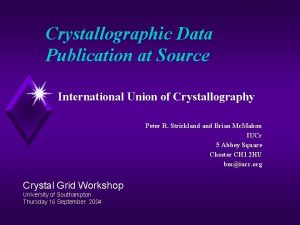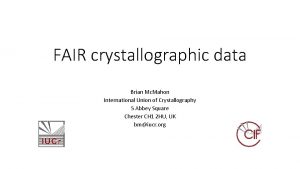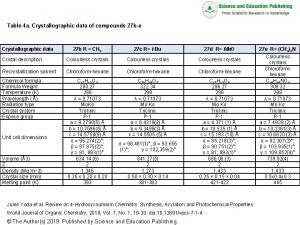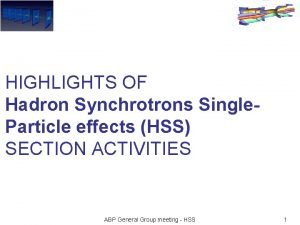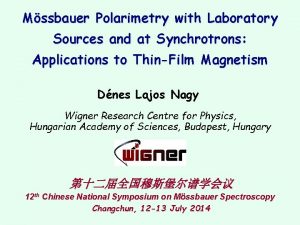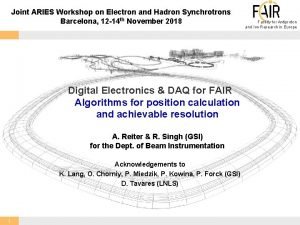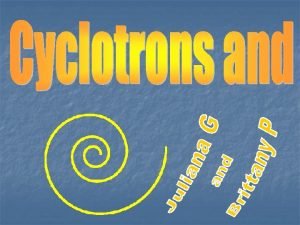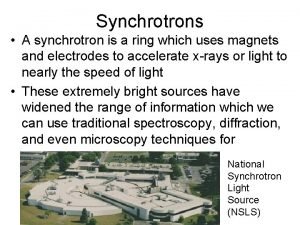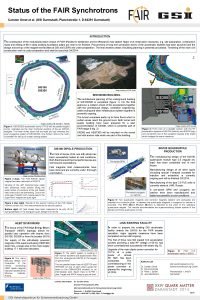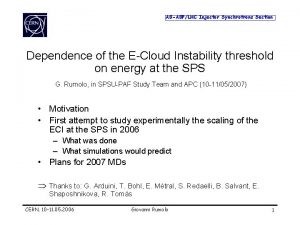Collecting Macromolecular Crystallographic Data at Synchrotrons Andrew Howard
























- Slides: 24

Collecting Macromolecular Crystallographic Data at Synchrotrons Andrew Howard ACA Summer School, 12 July 2007 Updated slightly November 2018

Synchrotrons are useful, not just fashionable • You can do almost any experiment better and faster at a storage ring than in a conventional lab; and there are experiments that you can only do at a storage ring.

What we need to think about • Why synchrotrons help: Factors, parameters • How they make things harder • How synchrotron data collection is different from domestic data collection • How macromolecular crystallography is different from other storage-ring apps

How synchrotrons help • Fluence • 1013 Xph/s/mm 2 • Brilliance • 1017 Xph/s/mm 2/mrad 2 • Tunability • E = 12398. 0 ± 0. 4 e. V • Collimation • FWHM(v) < 100 µm • Resources • Lasers, experts, labs …

Some definitions and units Quantity Definition Units Value Flux # photons / unit time Xph/ sec 1012 Fluence flux / unit area (Xph/sec)/ mm 2 1013 Brilliance fluence/ solid angle* Xph/sec/ 1017 (mm 2 -mrad 2) Brightness flux/solid angle* Xph/sec/ mrad 2 1016 * Sometimes defined in terms of bandwidth, e. g. brilliance = (fluence/solid angle)/bandwidth

Which parameters really matter? • For most macromolecular crystallographic experiments fluence is the relevant parameter: we want lots of photons entrained upon a small area • Brilliance matters with very large unit cells where a high divergence is bad

What does high fluence do? • Allows us to get good signal-to-noise from small samples • Allows us to irradiate segments of larger samples to counteract decay • Many experiments per day • Allows us to contemplate experiments we would never consider with lower fluence

What does high brilliance do? • How do we separate spots if the unit cell length > 500 Å? – Back up the detector – Use tiny beams • Large beam divergence will prevent either of those tools from working

Tunability • Monochromatic experiments: We’re allowed to choose the energy that works best for our experiment • Optimized-anomalous experiments: We can collect F(h, k, l) and F(-h, -k, -l) at the energy where they’re most different • Multiwavelength: pick 3 -4 energies based on XAS scan and collect diffraction data at all of them

What energies are available? • Depends on the storage ring • Undulators at big 3 rd-generation sources: 3 -80 Ke. V • Protein experiments mostly 5 -25 Ke. V – Below 5: absorption by sample & medium – Above 25: Edges are ugly, pattern too crowded • Some beamlines still monochromatic

Energy resolution & spectral width • Energy resolution: how selective we can reproducibly produce a given energy – Typically ~ 0. 4 e. V at 3 rd-Gen sources – Need: d. E < [Epeak - Eedge (Se)] ~ 1. 4 e. V • Spectral width: how wide the energy output is with the monochromator set to a particular value

Collimation • Everyone collimates. What’s special? – Beam inherently undivergent – Facility set up to spend serious money making collimation work right • Result: we can match the beam size to the crystal or to a desired segment of it

Resources Storage rings are large facilities with a number of resources in the vicinity • Specialized scientific equipment (lasers) • Smart, innovative people • Sometimes: well-equipped local labs where you can do specialized sample preparations

Why wouldn’t we do this? • Beamtime might still be scarce • You’re away from your home resources • Disruption of human schedules – Travel – 24 -hour to 48 -hour nonstop efforts – Bad or expensive food • Extra paperwork: Safety, facility security, statistics

How does synchrotron crystallography differ from lab crystallography? • Time scale very foreshortened • Multiwavelength means new experimental regimes • Distinct need for planning and prioritizing experiments • Robotics: taking hold faster @ beamlines

How does macromolecular crystallography differ from other beamline activities? • “Physics and chemistry groups at the beamline do experiments; crystallographers do data collection” • Expectation: zero or minimal down-time between users • Often: well-integrated process from sample mounting through structure determination • Typical experimental times short: 10 min/sample, 4 hours / project

Where might we collect data? • SER-CAT: 22 -ID and 22 -BM • SBC-CAT: 19 -BM and 19 -ID • GM/CA-CAT: 23 -ID multiple endstations • NE-CAT: 24 -ID, multiple endstations • LS-CAT: 21 -ID, multiple endstations • Bio. CARS: 14 -BM, 14 -ID

Southeast Regional CAT (22) • Established ~2002 • Run as an academic consortium of about 25 universities, mostly in the southeast, with some legislative or provost-level support • 30% of my salary from there until 2014

GM/CA-CAT (23) • Established around 2004 as a site for NIH GM and Cancer grantees, particularly those working on structural genomics and cancer therapeutics • First APS facility to build out multiple endstations on an insertion device line that are capable of simultaneous use

Bio. CARS • Established around 1997 to do cuttingedge crystallographic projects, particularly involving time-resolved techniques and BSL-2 or BSL-3 samples

SBC-CAT • Oldest macromolecular crystallography facility at the APS • 19 -ID: more structures solved than any other beamline in the world • Good for all sizes and resolutions

LS-CAT • Small consortium of academic labs • Initially funded partly by Michigan government • Built & maintained by Northwestern U • Several endstations: One tunable, the others not • Ample beamtime available

Is travel necessary? • Generally not. Most beamlines have either mail-in or robotic remote access. – Mail-in: user ships samples, local staff collects data – Remote: user ships samples, staff puts puck in robotic Dewar, remote user controls experiment via network • At SER-CAT, over 90% of all data are collected either remotely or via mail-in

Remote & Mail-in Realities • Advantages: – Cheaper – Schedule more flexible – Quicker change-over between users – Less safety-related paperwork • Disadvantages: – At mercy of local staff’s skill – Lose some training opportunities – Less control over experimental details – Remote: requires stable network connection
 Crystallographic directions
Crystallographic directions Hexagonal coordinate system
Hexagonal coordinate system Crystallographic planes
Crystallographic planes Vmse crystallographic planes exercises
Vmse crystallographic planes exercises Crystallographic information file
Crystallographic information file Hexagonal planes miller indices
Hexagonal planes miller indices Primative unit cell
Primative unit cell Indices de miller
Indices de miller Collecting highly parallel data for paraphrase evaluation
Collecting highly parallel data for paraphrase evaluation Collecting and displaying data
Collecting and displaying data Samples of collecting engineering data
Samples of collecting engineering data Tubular secretion
Tubular secretion Ductnn
Ductnn Lymphatic model
Lymphatic model Corbett maths.com
Corbett maths.com Coupon collecting problem
Coupon collecting problem Collecting gas over water
Collecting gas over water Chapter 34 collecting and testing specimens
Chapter 34 collecting and testing specimens Flaplike minivalve
Flaplike minivalve Collecting gas over water
Collecting gas over water Rutherford stamp collecting
Rutherford stamp collecting Coin collecting merit badge
Coin collecting merit badge Collect gas over water
Collect gas over water Dr frost maths
Dr frost maths Prize collecting steiner tree
Prize collecting steiner tree
